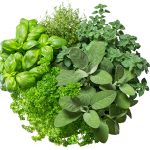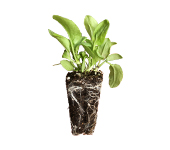The watering paradox.
Not too much: technically you can’t overwater a plant, it will stop drinking when it’s gotten it’s fill. However, you can keep a plant too wet over an extended period of time and this can create root rot which can cause problems. It’s ideal to water until the soil throughout the pot is wet. You can tell by looking through the drainage holes at the bottom of the pot to make sure the soil is wet all the way through. But give it time to use the water you’ve given it, generally a few days, because this is part of the process that helps the plant to grow.
Not too little: don’t let the plant wilt from a lack of water. The best way to gauge whether a plant needs water or not is to pick it up. If the soil is lighter in color and the plant is light to the touch, then it needs water. If the soil is darker in color and the plant has weight to it, then it’s fine. Generally the plant will tell you what it does or doesn’t need, you just need to be keen to it’s language.




